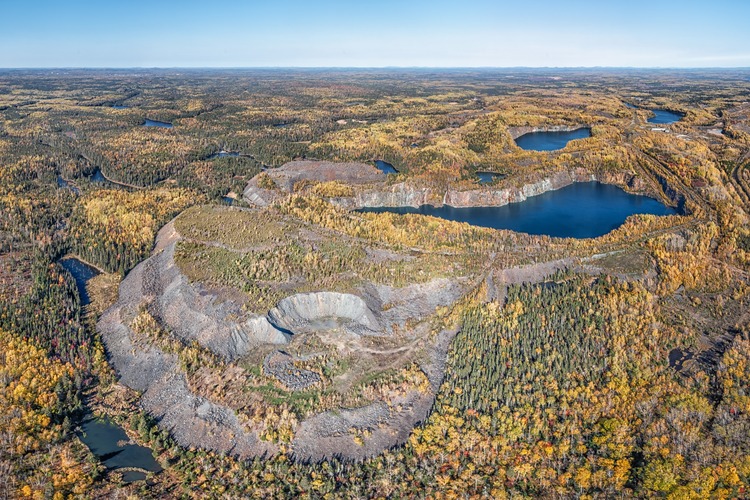
Discover more about the practice of cobalt mining in the DRC & the vast repercussions such activities have…
By
It’s in the batteries of your phone, electric cars and computers. It’s used as an enamel coating for steel, a fertiliser and in alloys. Without it, the world would be a different place. This is cobalt – a blue transition metal becoming increasingly prized for its importance in a variety of applications.
Related reads:
While the demand for cobalt soars as technology ever advances, the way of obtaining it remains highly controversial, particularly in the DRC, which is the largest producer of the metal and home to the world’s biggest reserves of it. There, around three-quarters of the world’s cobalt is mined, but not without major health and safety risks, environmental degradation and significant levels of human rights abuses.
That’s not all, though. For some mining workers, the level of income instability involved in the work is stark: dangerous, life-threatening tasks are performed with little financial reward. Recent reports suggest that around 140,000-200,000 miners in the DRC earn less than $10 USD per day. At least 25,000 of these workers are children, demonstrating the clear issue of forced child labour in cobalt production.
Even those not working directly in mines face health risks from their operations. 56 per cent of respondents in a UK RAID survey said women in the DRC experienced either reproductive or gynaecological issues since industrial mining activities began in the country.
Despite these stark issues, it is unlikely that the demand for cobalt will stall. By 2040, estimates suggest that 520,000 tonnes of the metal will be required each year to keep up with electric vehicle production, a stark increase from 170,000 tonnes back in 2021.
Mining and refining
Although the DRC mines most of the world’s cobalt (72.1 per cent), there are other countries where the metal comes from. Main contributors include Australia, Russia, Cuba and the Phillipines. In addition, according to USGS, around 120 million tonnes of cobalt resources may also be lurking deep within deep-sea nodules and crusts in the mid-Pacific.
However, when cobalt is first mined, it is in its unrefined form. It must then undergo a transformation from raw materials into a more purified and useable format. China leads the way as the world’s biggest refiner of the metal (76.4 per cent), with the next largest nation being Finland (9.7 per cent), followed by Norway (2.7 per cent) and Japan (2.6 per cent).
Artisanal versus industrial mining in DRC
Cobalt can be extracted in two ways, either via artisanal or industrial mining. Around 65 to 85 per cent of mining operations in the DRC fall under the industrial umbrella, with these mines owned by large companies and the metal extracted with large, heavy machinery.
The remaining percentage of mining activities are artisanal – a practice that refers to mining carried out manually, with individuals often using their hands or sticks instead of tools to dig out mine tunnels. Such labour is carried out by independent miners – including children – either via constructing ‘open-air mines’ themselves or using areas near the fringes of commercial mines.
Today, around 10 million people in the DRC work as artisanal miners, contributing to 10 to 20 per cent of the DRC’s copper and cobalt production.
Back in 2002, the DRC pledged to formalise the artisanal sector – but progress to do so has been minimal even twenty years later, meaning millions of individuals are left in precarious situations and are essentially forced to work in dangerous conditions as the only means of an income.
Industrial mining has largely avoided public scrutiny in comparison to the human rights abuses associated with its artisanal counterparts. This is largely thanks to slick narratives purported by major corporations, but recent investigations have uncovered how Congolese workers are plagued by the exploitative labour practices involved in this work, too.
For example, although those working in industrial mines have access to appropriate tools and equipment, attempts to keep costs low mean worker safety is still not guaranteed.
Ultimately, both industrial and artisanal mining carry the same health risks, ranging from overexertion of workers to exposure to toxic chemicals and gases in the environment. In the DRC, notably in its southern regions, mining for cobalt also carries the risk of exposure to radioactive uranium.
The future of cobalt mining
As the world heads toward a greener future, it’s undeniable that cobalt will continue to be mined. However, there are ways in which cobalt mining’s harmful impacts are being mitigated.
Already, the Fair Cobalt Alliance (FCA) has made key achievements in doing so in the DRC: the platform has enhanced safety measures in one particular mine to ensure workers are appropriately trained; created savings groups to allow individuals to form micro-enterprises, school fee loans and alternative incomes outside of mining, and formed a programme supporting children in securing a future away from mine work.
In 2024, the FCA also established a project – known as the Jet Minerals Challenge – to allow a DRC artisanal cobalt mining community to receive digital payments for their work.
Devising better strategies of recycling cobalt may also help to alleviate the extent to which it is mined. Already, the EU has introduced a new battery regulation coming into effect in 2031; any lithium-ion battery must contain at least 6 per cent lithium and nickel and 16 per cent cobalt. By 2036, these will rise to 12 per cent, 15 per cent and 26 per cent.
Having said that, such a solution does not adequately solve the current issues facing the DRC’s mining industry today, but it will likely prevent it from getting worse and becoming more overwhelmed in the future.
Ultimately, the task of completely eradicating all abuses within DRC’s cobalt mining is complex and will require far greater and comprehensive action from global players, organisations, and corporations alike.




